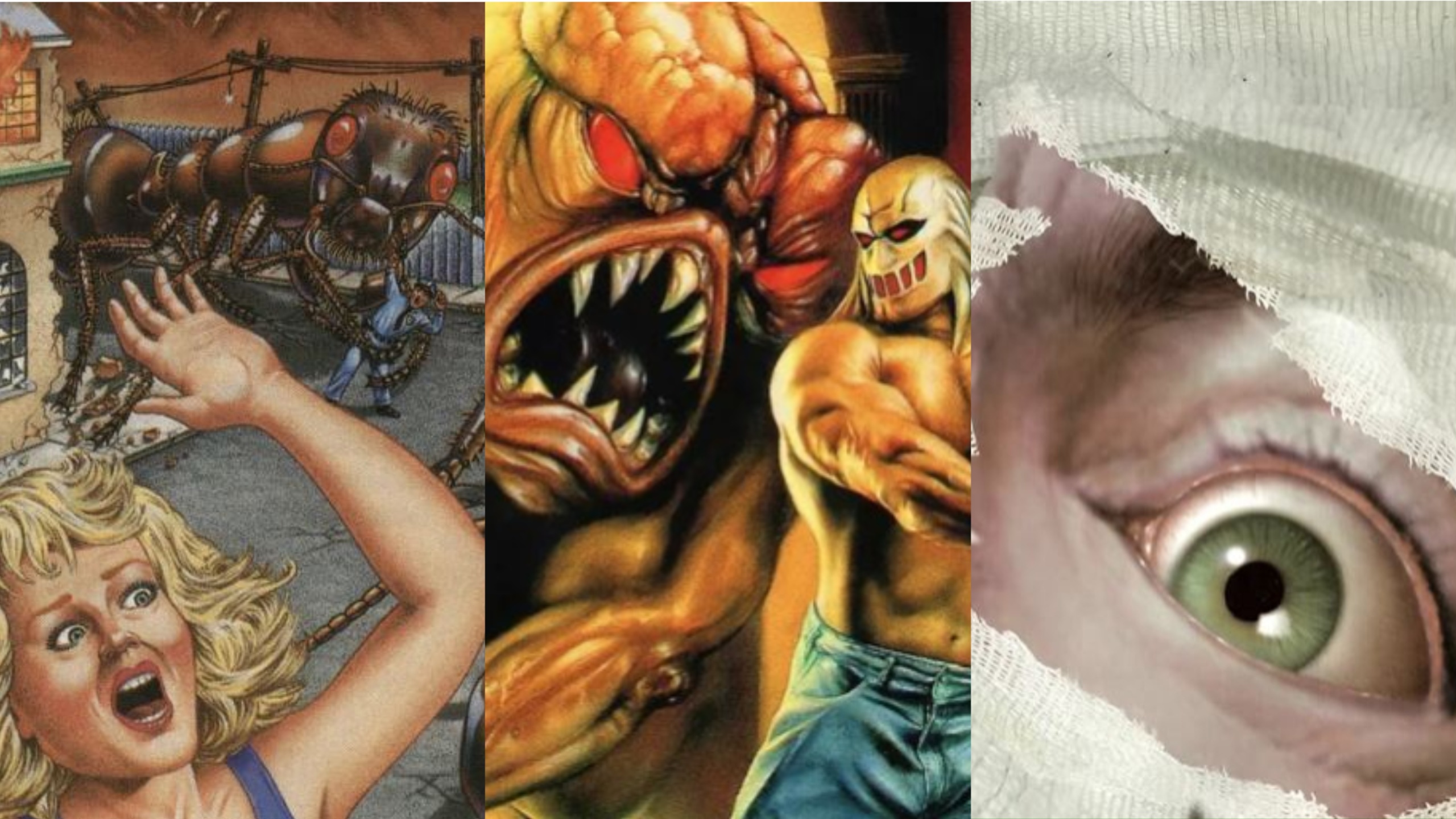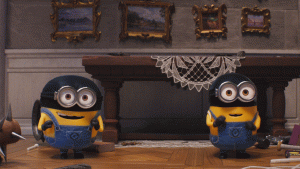
Recent reports suggest Capcom is preparing to remake more Resident Evil games. It’s hardly a surprising report given both the quality of those recent remakes and the cultural power of the Resident Evil franchise. However, it is a reminder that Resident Evil has historically achieved a level of success that has eluded pretty much every other horror game franchise. The genre has long lived in the wake of Resident Evil, and it’s been that way since the ’90s when the first Resident Evil made such a seismic impact that much of what followed was called a clone.
Because of that, some of the earliest and most fascinating horror games have largely been ignored or otherwise forgotten about. They may not have come anywhere close to replicating Resident Evil‘s success, but if you ask me, these forgotten ’90s horror games are more deserving of a remake than any of the already great games in that legendary franchise.
It Came From the Desert (1990)
You got me. This one technically debuted in 1989 and was ported to DOS and other platforms in 1990. However, it’s hard to pass up the chance to talk about one of the most incredible horror games that doesn’t get talked about enough.
It Came From the Desert is a hybrid title that combines point-and-click adventure elements with first-person exploration/combat and overhead strategy-like segments. Mostly, though, it’s a detective game that sees you investigate the aftermath of a meteor crash in a small desert town. It’s a strange combination of concepts that honestly doesn’t always come together in the ways it needs to.
But this game more than earns its stripes through its theme. Essentially a tribute to the sci-fi B movies of the 1950s, It Came From the Desert lovingly recreates the sometimes awful charms of those films. Its plot even revolves around giant ants attacking a small town full of genre archetype characters. Much like Tremors, though, It Came From the Desert feels closer to a tribute to those movies rather than a mere parody of them. The style and concept of this title are impossible not to fall in love with if you have any affection for its inspirations. We desperately need more horror games of this style.
Laser Ghost (1990)
Ignore Laser Ghost’s incredibly ‘90s (and admittedly awesome) title. This three-player light gun shooter in which you and your friends battle a variety of supernatural threats is, for all intents and purposes, a Ghostbusters game. Oh, it’s never so bold as to use that name, but one look at this game is enough to confirm that its developers knew exactly what they were doing.
That’s a good thing. Laser Ghost is the dream multiplayer Ghostbusters arcade game we otherwise never got (with due respect to 1987’s The Real Ghostbusters). Flatteries aside, it’s got quite a few things going for it on its own terms. It expertly incorporates more disturbing horror concepts into its brilliant levels that often exhibit the best of ‘90s arcade visual creativity. House of the Dead is the only horror shooter that rivals its charms.
Waxworks (1992)
While the late ‘80s and ‘90s saw a massive influx of horror games and dungeon crawlers, Waxworks is one of the few games that combined both of those concepts. It’s strange we never got more horror dungeon crawlers during that time given how much horror is baked into the basic dungeon crawler concept. Then again, Waxworks’ struggles to incorporate dungeon crawling role-playing into what is really more of a point-and-click horror game suggests that the formula for such titles may be more complicated than we think.
Uniqueness aside, the big thing that makes Waxworks so special is the thing that many people dinged it for back in the day: its gore. This is a relentlessly violent game with numerous scenes that are still capable of shocking even calloused modern gamers. Call it a novelty, but the way that gore is woven into this time-traveling tale grants the game a morbid, almost Clive Barker-esque style of horror that is otherwise hard to find in games. To my knowledge, it’s also the only game that allows you to battle ancient Egyptian sorcerers, zombies, and Jack the Ripper.
Dark Seed (1992)
Don’t go into Dark Seed expecting much gameplay-wise. This story of a writer turned alien abductee follows a fairly standard (if competent) point-and-click adventure formula. It’s one notable innovation in that respect (its time limit system that requires you to beat the game in three hours) is more of a hindrance than an attribute.
Instead, you come to Dark Seed for the work of H.R. Giger. The legendary artist not only contributed his iconic biomechanical style to the game but also convinced developer Cyberdreams to incorporate a higher-resolution display setting that brilliantly displays all of his incredible work. Crucially, this game knows when to utilize Giger’s stunning art to enhance certain moments and ensure you never become desensitized to their effect. It belongs in a museum.
Splatterhouse 3 (1993)
While the Splatterhouse series is fairly well-known (if painfully dormant), people still sleep on Splatterhouse 3. This game retains the gory beat-em-up charms of its predecessors but attempts to expand upon their relatively simple gameplay by adding non-linear level design and time limits. The basic goal is to navigate rooms of varying difficulty within a haunted house to rescue your friends in time. You will ultimately receive one of four different endings based on your performance.
That combination of concepts makes Splatterhouse 3 the Splatterhouse version of River City Ransom. Well, almost. This game doesn’t feature nearly as many pseudo-RPG concepts, and its emphasis on exploration and time limits means it does sacrifice some of the more timeless arcade charms of its predecessors. But the almost survival horror-like nature of this game’s set-up is compelling enough to leave you wishing we had gotten a few more Splatterhouse games like this one.
Doctor Hauzer (1994)
To be clear, the biggest reason Doctor Hauzer is forgotten is because it was released for the 3DO: a console that was pretty much destined to fail and did so spectacularly. Worse, it was only ever released in Japan for that console. Otherwise, we may talk about this 3D survival horror game with the same reverence reserved for genre innovators like Alone in the Dark and Resident Evil.
Actually, with its tank controls, fixed cameras, and UI, Doctor Hauzer could very well be considered the spiritual missing link between those titles. Even then, it features a few ideas that we didn’t really see in many survival horror titles that followed (most notably the option to switch to an overhead perspective at will). While this game’s painfully slow nature and emphasis on complex puzzles over combat (you are a reporter researching a mad scientist after all) makes it a tough hang these days, it would have undoubtedly reached more people if it received a global release on a bigger console.
Enemy Zero (1996)
Released in Japan about 9 months after Resident Evil’s debut, Enemy Zero already felt out of date by the time it debuted. In a bold new era for the genre, this FMV game from the developers of the largely underrated D felt positively gimmicky. While many agreed it was stunningly beautiful, its deliberately slow gameplay and frustrating combat made it feel like more of a tech demo that was unleashed rather than a finished product.
Enemy Zero is generally seen through more favorable eyes these days. Oh, it’s still frustrating to “play” during those rare chances when the game is gracious enough to let you do such a thing, but the effectiveness of the game’s sci-fi horror atmosphere (especially its all-time great sound design) has relatively few peers to this day. It’s representative of the best (and sometimes worst) qualities of its enigmatic creator, Kenji Eno.
Realms of the Haunting (1996)
Perhaps the strangest game we’ll discuss today, Realms of the Haunting is billed as a horror first-person shooter. I suppose that’s technically true, but there is relatively little action in this game. Instead, most of your time will be spent exploring trippy horror environments throughout the ages while occasionally watching some enjoyably bad FMV cutscenes. I struggle to think of another game quite like it.
And that’s honestly this otherwise fascinating game’s biggest flow. Ideally, it would have pursued the design directions that games like System Shock or Half-Life eventually did. Instead, it occupies a middle ground between several concepts without ever really committing to a path. However, the uniqueness of its structure is certainly novel and ultimately enhances the game’s incredible storytelling by making you feel as if you’re playing something delivered from another galaxy. It’s too novel and fascinating to remain so obscure.
Nightmare Creatures (1997)
Nightmare Creatures is another strange beast. It’s essentially a Tomb Raider-esque PS1 action-adventure game, though it focuses on combat more than many of the similar games of that era did. Today, Nightmare Creatures is often compared to Bloodborne, which is shockingly accurate given its gameplay balance and Victorian horror style. Sadly, Nightmare Creatures isn’t nearly as well-polished and is often a victim of its ambition.
It’s difficult to not appreciate that ambition, though. Structure and style aside, Nightmare Creatures featured a few ideas that still feel novel today. Among them are a fighting game-like combo system, dismemberment abilities, and an adrenaline system that encourages you to constantly engage in combat or suffer penalties. Some of those ideas work much better than others, but when you combine the better ones with the game’s fantastic horror atmosphere, it’s easy to fall in love with at least the idea of what this could have been.
Echo Night (1998)
Before revolutionizing modern gaming with their Souls titles, FromSoftware released a series of games that are now widely recognized as benign ahead of their time. While the Soulslike predecessor King’s Field is the most commonly cited example of their ambition, it’s Echo Night that would have received a lot more love had it only been released in a different era.
Echo Night is essentially one of the earlier examples of what some call “walking simulator” games. That may sound like a knock, but as someone who loves the very best games of those types, it’s easy to look at Echo Night’s first-person exploration gameplay and appreciate the game’s attempts at a more mature form of horror built on narrative and subtle scares. I know they’re busy with that whole “Elden Ring” thing, but I’d love to see the modern FromSoftware team take another crack at this one.
Deep Fear (1998)
Nobody (least of all, the game’s developers) is going to pretend that Deep Fear wasn’t…inspired by Resident Evil. It’s as Resident Evil as you can get without having to spend a few weeks with Capcom’s lawyers. Like many of the Resident Evil clones of that era, Deep Fear didn’t do quite enough to address that game’s control, voice acting, and gameplay problems to really make a name for itself. It was also released for the Sega Saturn at a particularly bad time for the console.
The thing that Deep Fear has going for it, though, is its emphasis on the “survival” part of the survival horror genre. Set in an underwater research facility where everything has gone horribly wrong (doesn’t it always?), Deep Fear is built around an air supply mechanic that limits the amount of time you can spend in certain areas. That not only necessitates the use and acquirement of stations and masks that allow you to breathe in those environments, but it fundamentally alters how you decide to navigate every room and scenario in the game. Few horror games of this type have done a better job of integrating their settings into their gameplay.
Sanitarium (1998)
While it utilizes an isometric perspective that was popular among CRPGs at that time, Sanitarium is structurally much closer to a point-and-click adventure game. In it, you play as a man who awakens in a Sanitarium without any idea of who he is, where he is, or how he got there. All he knows is that strange things are occurring all around him, and everyone keeps insisting that he can’t trust his supposedly ill mind.
It’s a bold comparison, but Sanitarium often feels like a horror version of Disco Elysium made at the end of a golden era for the point-and-click adventure genre. It lacks that game’s more overt role-playing concepts and advanced dialog options, but the way this game emphasizes the power of your mental state by refusing to allow you to easily separate imagination from reality is horrifying and inspired. It’s one of the best horror games of the ‘90s.
Hellnight (1998)
Like some of the other games on this list, Hellnight’s biggest flaws can often be attributed to its first-person perspective. Developer Atlus (of Persona fame) had the idea of a first-person horror game where you are given no real means to defend yourself years before that became a popular part of the genre. The problem is that they didn’t quite figure out how a first-person game should look or control when it doesn’t allow you to shoot.
Nearly every other aspect of this title is simply brilliant, though. It’s set in a dystopian world where a protagonist on the run from cultists is soon attacked by a mutated creature that just escaped from a lab (don’t ask). They then find themselves in a secret underground society filled with runaways and fugitives. It’s a hell of a setup, and it gives way to a recruitment-based that really lets you explore the lives of the people you meet and the world they live in.
Galerians (1999)
Few games have been dogged by the detrimental interpretation of the “Resident Evil” clone more than Galerians. Yes, it features fixed camera angles and tank controls, but that was just the language of the genre at that time. No other game replicates the thing that makes Galerians truly special: its psychic power-based gameplay.
You may think that having psychic powers instead of the guns typically found in RE-era survival games would give you a significant advantage in combat. However, that’s not entirely true. Galerians emphasizes the pain and danger of using such abilities in truly incredible ways. Not only does triggering one consume quite a bit of time and resources, but continuing to use them strains the game’s protagonist in ways that can actually kill them. The way Galerians forces you to manage your use of those abilities is one of the most incredible and original concepts in horror gaming history.
The post Forgotten ’90s Horror Games That Deserve A Remake appeared first on Den of Geek.







